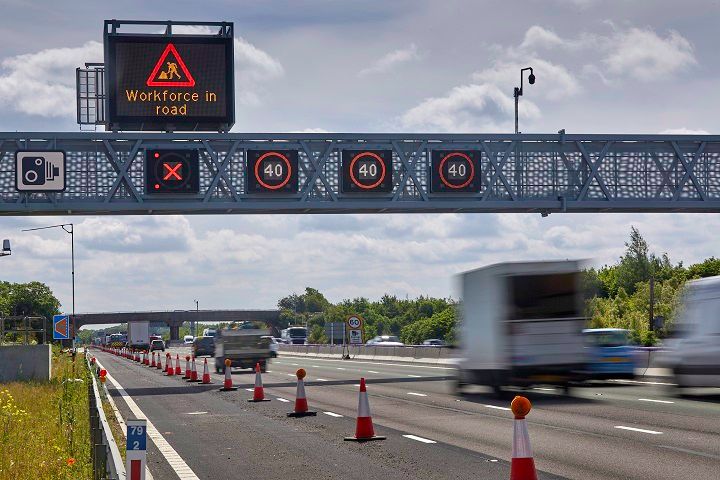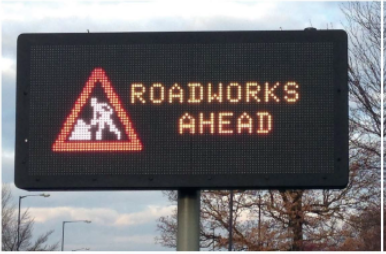Top tips for choosing variable message signs (VMS)
Guided by the lights Derek Williamson, Business Development Manager for urban at SWARCO Traffic, gives his top tips for choosing variable message signs (VMS)
VMS can play a key role in ensuring traffic flow remains both safe and efficient. But when it comes to product procurement and finding the right solution to meet your needs, what factors need to be considered?
Cost is, of course, hugely important, but so too is quality. And what about the latest safety standards and regulations? Product lifespan and warranty? Maintenance and support services? As well as considerations around energy efficiency and environmental impact? There is no one-size-fits-all option.
A detailed and thorough procurement process that takes the above factors, and more besides, into account is needed to ensure the right solution is found and to help avoid costly mistakes. Lifetime value
It is tempting to buy cheap, and reduce initial capital expenditure [Capex), assuming it's never at the expense of safety, compliance, sustainability or reliability. Understanding what is included in the price is therefore important. Does it, for example, include the cost of installation or ongoing maintenance? Does it take into a total cost of ownership?
A sign that looks outwardly expensive could be a better option than a cheaper product that lasts half as long. A cheaper product might similarly prove to be a costly decision if it does not comply with UK regulations or it is simply not fit for purpose to work as intended. There are too many factors and too many variables involved here for price to be the one and only consideration.
Performance can also often be overlooked, and compliance to specification does not always guarantee product performance, but in simple terms - better VMS performance ensures higher road safety, which over time leads to lower costs.
When it comes to selecting VMS, the focus needs to shift from cost per unit to take in the bigger picture. The core elements of quality, reliability, durability, energy efficiency and performance should all be part of
the decision-making process as well, and whenproperly understood provide a more accurate reflection of investment.

Sustainability
The very nature of VMS is a sustainability challenge. On the one hand, VMS can be utilised to help reduce congestion and improve air quality. It can be updated almost immediately to re-route traffic out of high-density areas, especially during peak commuting times. To that end, they are good for the environment. On the other, when being used in continuous 24-hour operation over 365 days a year, VMS can be a contributor to unwanted carbon dioxide emissions. But more environmentally friendly solutions are available. SWARCO, for example, has developed its own inhouse 3G optical lens system for its VMS, that captures 100% of the light emitted from the LEDs, which has helped to reduce power consumption by almost 50%. Similar technologies are also being developed across the industry.
With the big picture in mind, energy efficient signs are a must, to not only ensure durability and performance, but also help contribute to a greener future.
Supply chain control
Knowing what you are buying and who you are buying from is a fundamental part of any transaction, and it should be no different when it comes to VMS and essential safety solutions. The best way to ensure new technology meets its intended purpose is to undergo Factory Acceptance Testing IFAT) and Site Acceptance Testing !SAT). In the event of an incident any sign that does not conform to TSRGD or displaying messages not defined in the Road Traffic Regulation Act can be deemed to be unlawful
on each and every single new product
they purchase. It is highly recommended and should be a fundamental part of the procurement process.
Thorough factory testing and assessment helps assure all parties that the new equipment complies and adheres to all contractual specifications. A SAT can be conducted after the products have been delivered, and is a true way to verify that everything is functioning as needed.
If you are purchasing VMS from a supplier with a UK base for manufacturing and service, that works in partnership with local SM Es to provide and install the signs, there is comfort in knowing the chain of command and a clear structure of control in place.
On the other hand, a reseller has very little control over upgrades, maintenance or spare parts.
Certification
Before Brexit, all products manufactured for use on our highways needed to be CE marked - the official 'stamp' that proves your product meets the minimum standard for EU safety, health and environmental protection. But what seemed a simple requirement in theory was actually one fraught with misunderstanding, inconsistency and confusion. Threats of fines and even imprisonment were touted for not having the CE stamp of approval, but this was not policed. Additionally, despite it being the European standard, CE marked products were startlingly not compulsory in tenders, with each local authority able to make its own decision regarding the standard they are looking for, which rather made a mockery of CE approval.
Post-Brexit, and the lines are still blurred. The UK will continue to accept EU CE marked products until 1 January 2023 when it switches to the UKCA mark - a regime that comes with its own issues (see Highways May 2022). Europe no longer accepts UK CE marked products, and ·self-declaration· has disappeared altogether. For UK products to be used in Europe (including Ireland), they will have to be tested and CE marked in Europe, but question marks still remain on how stringently this is being policed. To add further confusion, notified UK bodies can mark a UK product with a UKCA mark, which will be used in England, Scotland and Wales and accepted from 1 January 2023. UKCA will not be accepted in Northern Ireland, where a CE mark and UK INII mark will be required.
In the UK, Traffic Open Products and Specifications ITOPAS) prescribes its requirements for VMS within the Traffic Signs Regulations and General Directions 2016 ITSRGD). and manufacturers are responsible for ensuring their products meet the relevant legislation. Any sign that does not conform to TSRGD or displaying messages not defined in the Road Traffic Regulation Act can be deemed to be unlawful and leave local authorities and other responsible organisations vulnerable to litigation in the event of an incident. But, as with CE markings before, TOPAS approved products are not compulsory within tenders, which again is frankly alarming.
The Association for Road Traffic and Safety Management IARTSM) published its guide to selecting the right VMS in 2021.
The document provides organisations with useful advice and information on what to consider when it comes to selecting VMS and focuses on four key criteria for success:
• Conspicuousness - where the signs are installed and how noticeable they are
• Legibility - how easy messages on the sign are to read
• Comprehensibility - how easy the messages are to understand and follow
• Credibility - this combines the other criteria but also includes the visual and physical performance of the signs, ensuring they are fit for purpose. The ARTSM guide provides practical advice and guidance on what standards and legislation need addressing in order to achieve the success criteria, and these steps should be followed as a minimum to ensure signage and systems meet performance and legal standards, the days of 'any sign will do' are long gone.

Variable Message Signs
from SWARCO
Service and maintenance
What happens if something goes wrong?
If there is a technical fault with one of
your VMS, or a spare part is needed, who
is responsible for this and how quick can
a resolution be found? The answer will depend on your provider, and also on the terms agreed during the initial procurement process. This again comes back to the question of cost. In understanding 'value·, what level of service and ongoing support are you entitled to? This should be a fundamental question.
VMS failures usually are software/firmware or hardware related. The main hardware faults are often related to the LED modules, control boards or power supplies. In the event that a fault does occur, having an engineer or maintenance technician attend a site can be hugely costly. Again, there are multiple variables - how long it takes for an engineer to attend, how long it takes the engineer to troubleshoot the fault, not to mention any potential road closures or the need for spare parts to be sourced.
All of these factors highlight the potential benefits of partnering with a VMS supplier that provides ongoing support services and maintenance repairs.
Money well spent
Although they are just one element of any traffic management system or solution, selecting the right VMS for your operation
or organisation is not a decision to be taking lightly. A long-term focus on overall value is needed to ensure money is well spent.
